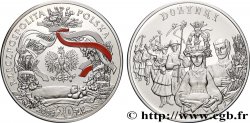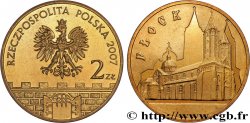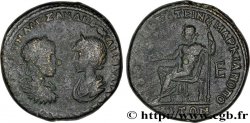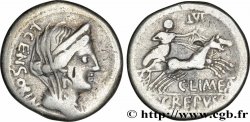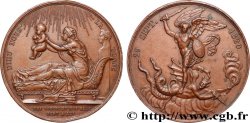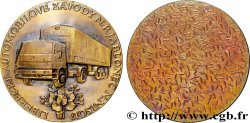E-auction 646-656082 - fme_1053132 - POLAND Médaille, Commémoration de l’insurrection de Janvier
Чтобы принять участие в торгах, вы должны войти в систему и стать подтвержденным участником аукциона. Войдите, чтобы сделать ставку. Ваш аккаунт будет подтвержден в течение 48 часов. Не ждите до закрытия торгов, чтобы зарегистрироваться.Сделав ставку на данный товар, вы вступаете в юридическое соглашение на покупку выбранного товара и нажатием кнопки «Сделать ставку» подтверждаете принятие вами условий интернет-аукционов cgb.fr.
Ставка может бить сделана только в полном эквиваленте евро. Торги закроются согласно времени, указанному в описании товара, все ставки, сделанные после закрытия торгов, учитываться не будут. Не следует откладывать предложение вашей ставки до последнего момента, так как система может не успеть обработать вашу заявку, и ваша ставка не будет принята. Более детальную информацию вы найдёте здесь: FAQ по интернет-аукционам.
БЕСПЛАТНО.
БЕСПЛАТНО.
| Оценить : | 50 € |
| Цена : | 31 € |
| Максимальная предлагаемая цена : | 44 € |
| Конец торгов : | 01 September 2025 20:26:20 |
| Участников : | 4 Участников |
Тип Médaille, Commémoration de l’insurrection de Janvier
Дата: n.d.
Монетный двор / Город: Pologne
Металл: tin
Диаметр: 33 mm
Ориентация осей монеты: 12 h.
Вес: 13,96 g.
Век: lisse
Пуансон: sans poinçon
Комментарии о состоянии
Patine grise hétérogène. Présence de marques d’oxydation, de rayures, de concrétions grises et d’usure sur les reliefs. La tranche présente de légers coups et rayures
Лицевая сторона
Аверс: легенда: WOLNOŚĆ RÓWNOŚĆ NIEPODLEGŁOŚĆ.
Аверс: описание: Blason de la république tripartite de Pologne-Lituanie-Ruthénie comprenant comprenaient l'aigle polonaise, le Vytis lituanien et le saint patron de la Ruthénie, l'archange Michel.
Аверс: перевод: LIBERTÉ ÉGALITÉ INDÉPENDANCE.
Обратная сторона
Реверс: легенда: ZE SREBER POLSKICH ZŁOŻONYCH NA SPRAWĘ NARODOWĄ // NA / PAMIĄTKĘ / UWŁASZCZENIA / WŁOSCIAN / PRZEZ / RZĄD NARODOWY / POLSKI / 22 STYCZ. / 1863 R..
Реверс: Описание: Légende circulaire et légende en 9 lignes.
Реверс: перевод: FABRIQUÉ EN ARGENT POLONAIS, DÉDIÉ À LA CAUSE NATIONALE // EN COMMÉMORATION DE LA RÉPRESSION DES PAYSANS PAR LE GOUVERNEMENT NATIONAL POLONAIS, LE 22 JANVIER 1863.
Комментарий
Une médaille frappée pour commémorer l'émancipation des paysans par le gouvernement national polonais en 1863.
L’Insurrection de Janvier", déclenchée le 22 janvier 1863, fut une tentative de soulèvement armé contre la domination de l’Empire russe dans les territoires polonais, lituaniens et ruthènes (ukrainiens). Organisée par des mouvements patriotiques polonais, elle visait à restaurer une Pologne indépendante et à établir une société plus juste, fondée notamment sur l’abolition du servage et l’union des peuples opprimés de l’ancienne République des Deux Nations.
Dans ce contexte, "l’idée d’une république tripartite polono-lituano-ruthénienne" ressurgit comme un projet politique audacieux. En 1861, deux ans avant le soulèvement, une manifestation patriotique eut lieu à Horodło, symbolique pour l’histoire commune des nations concernées. Lors de cet événement, les nobles de Pologne, de l’ancien Grand-Duché de Lituanie, de Volhynie et de Podolie proclamèrent la « Seconde Union de Horodło », écho direct à l’union originelle de 1413. Ce projet rêvait d’une Nouvelle Pologne, fondée non pas sur une seule nation, mais sur l’union fraternelle de trois peuples : polonais, lituanien et ruthène.
A medal struck to commemorate the emancipation of the peasants by the Polish national government in 1863.
The January Uprising, which began on 22 January 1863, was an attempted armed uprising against the rule of the Russian Empire in the Polish, Lithuanian and Ruthenian (Ukrainian) territories.. Organized by Polish patriotic movements, it aimed to restore an independent Poland and establish a more just society, based in particular on the abolition of serfdom and the union of the oppressed peoples of the former Polish-Lithuanian Commonwealth..
In this context, \\\"the idea of a tripartite Polish-Lithuanian-Ruthenian republic\\\" resurfaces as a bold political project.. In 1861, two years before the uprising, a patriotic demonstration took place in Horodło, symbolic for the common history of the nations involved.. At this event, the nobles of Poland, the former Grand Duchy of Lithuania, Volhynia and Podolia proclaimed the \\\"Second Union of Horodło\\\", a direct echo of the original union of 1413.. This project dreamed of a New Poland, founded not on a single nation, but on the fraternal union of three peoples: Polish, Lithuanian and Ruthenian.
L’Insurrection de Janvier", déclenchée le 22 janvier 1863, fut une tentative de soulèvement armé contre la domination de l’Empire russe dans les territoires polonais, lituaniens et ruthènes (ukrainiens). Organisée par des mouvements patriotiques polonais, elle visait à restaurer une Pologne indépendante et à établir une société plus juste, fondée notamment sur l’abolition du servage et l’union des peuples opprimés de l’ancienne République des Deux Nations.
Dans ce contexte, "l’idée d’une république tripartite polono-lituano-ruthénienne" ressurgit comme un projet politique audacieux. En 1861, deux ans avant le soulèvement, une manifestation patriotique eut lieu à Horodło, symbolique pour l’histoire commune des nations concernées. Lors de cet événement, les nobles de Pologne, de l’ancien Grand-Duché de Lituanie, de Volhynie et de Podolie proclamèrent la « Seconde Union de Horodło », écho direct à l’union originelle de 1413. Ce projet rêvait d’une Nouvelle Pologne, fondée non pas sur une seule nation, mais sur l’union fraternelle de trois peuples : polonais, lituanien et ruthène.
A medal struck to commemorate the emancipation of the peasants by the Polish national government in 1863.
The January Uprising, which began on 22 January 1863, was an attempted armed uprising against the rule of the Russian Empire in the Polish, Lithuanian and Ruthenian (Ukrainian) territories.. Organized by Polish patriotic movements, it aimed to restore an independent Poland and establish a more just society, based in particular on the abolition of serfdom and the union of the oppressed peoples of the former Polish-Lithuanian Commonwealth..
In this context, \\\"the idea of a tripartite Polish-Lithuanian-Ruthenian republic\\\" resurfaces as a bold political project.. In 1861, two years before the uprising, a patriotic demonstration took place in Horodło, symbolic for the common history of the nations involved.. At this event, the nobles of Poland, the former Grand Duchy of Lithuania, Volhynia and Podolia proclaimed the \\\"Second Union of Horodło\\\", a direct echo of the original union of 1413.. This project dreamed of a New Poland, founded not on a single nation, but on the fraternal union of three peoples: Polish, Lithuanian and Ruthenian.








 Cообщить об ошибке
Cообщить об ошибке Распечатать страницу
Распечатать страницу Отправить мой выбор
Отправить мой выбор Задать вопрос
Задать вопрос Consign / sell
Consign / sell
 Информация
Информация